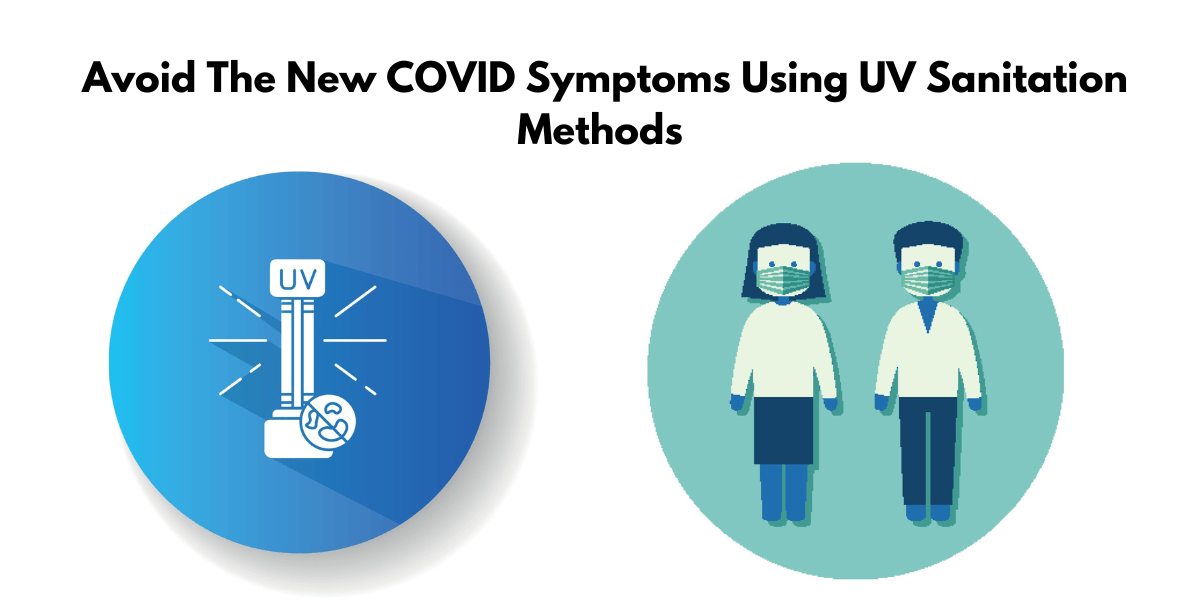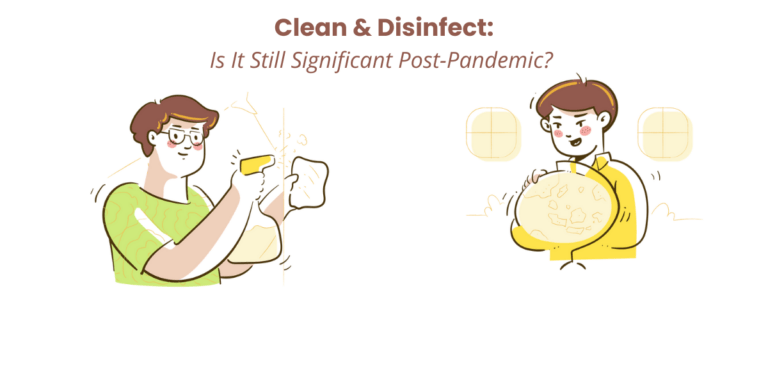New COVID Symptoms: How to avoid all coronavirus variants using UV sanitation methods
How to avoid the new COVID symptoms using UV sanitation methods
There are now three variants of the coronavirus that are spreading throughout the world. The World Health Organization has said these new variants are more contagious than the original virus.
So how can you protect yourself from all three variants?
You can avoid all coronavirus variants by using UV sanitation methods. UV light is proven to kill viruses and bacteria.
By sanitizing your home with UV light, you can eliminate any virus, including the new variants.
There are many UV sanitation products on the market. I’ve listed a few of my favourites below:

What are the new COVID symptoms?
We are familiar with the most common symptoms of COVID-19 by now: fever, dry cough, and shortness of breath. However, research is beginning to show that there may be other less common symptoms that we should be aware of. Here are some new possible COVID-19 symptoms that you should look out for:
Loss of taste or smell
Loss of taste or smell is considered a new COVID symptom because it positively predicts swab positivity in alpha, delta, and Omicron variants. This symptom is not affected by age, sex, or vaccination status, making it an important indicator for detecting the virus in individuals. Furthermore, its effects are more common with Alpha and Delta variants than with Omicron ones.
Chills
COVID is known to cause a wide range of symptoms in adults, including a high temperature or shivering (chills), a new, continuous cough, and shortness of breath. The CDC has an official list of COVID symptoms which may not be up to date. Symptoms can vary from person to person, with some experiencing more than others. The most common COVID symptoms are fever, chills, cough, shortness of breath, fatigue, muscle aches, headache, the new loss of taste or smell, sore throat, congestion or runny nose, and nausea or vomiting. It is, therefore, important for individuals to stay aware and know the signs and symptoms associated with the virus to identify it early on and seek appropriate medical treatment immediately if necessary.
Muscle pain
The Centers for Disease Control and Prevention (CDC) has noted that muscle pain is among the new symptoms of COVID-19, although it is not as common as other symptoms such as sore throat and runny nose. The CDC states that those who experience persistent muscle pain should seek medical attention and monitor any other potential COVID-19 symptoms. Additionally, the CDC recommends avoiding all variants of coronavirus by using UV sanitation methods.
Headache
COVID is a respiratory illness caused by the cold and flu viruses, which can result in people experiencing a range of symptoms. Headache is one of the new symptoms that has been identified to be associated with COVID-19, likely due to inflammation in the body caused by the virus. Many individuals who are unvaccinated or partially vaccinated report headaches as one of their most commonly experienced symptoms due to being infected with COVID-19. It ranks fifth on the list of most reported symptoms for all individuals, regardless of whether they are fully vaccinated. To avoid developing any variants of coronavirus, it is important to practice good hygiene habits, such as washing your hands regularly and using UV sanitation methods on surfaces that may have come into contact with an infected person.
Sore throat
The emergence of a sore throat as a new symptom of COVID has implications for prevention and control measures since it can indicate the presence of the virus. It is important to seek medical help to obtain an appropriate diagnosis and treatment if this new symptom has been experienced. Additionally, prevention measures should be followed strictly to reduce the risk of contracting or spreading COVID-19; these include frequent handwashing, wearing masks when out in public places, social distancing, avoiding contact with symptomatic individuals, and using UV sanitation methods for disinfecting surfaces regularly.
Congestion or runny nose
It has been found that congestion or a runny nose is a new symptom of COVID. This symptom has become increasingly common among unvaccinated individuals, suggesting that the virus has progressed to a more serious stage. This could be due to the emergence of new variants, which may cause more severe symptoms. Therefore, it is important to use UV sanitation methods to prevent infection by all coronavirus variants and avoid these increasingly common symptoms of COVID-19.
Nausea or vomiting
The Centers for Disease Control and Prevention (CDC) has identified three new COVID-19 symptoms, including shortness of breath, difficulty breathing, and repeated shaking with chills. These new symptoms are significant as they further indicate the seriousness of the virus. Additionally, these symptoms may provide additional clarity to those who suspect they have contracted the virus but have not been tested yet. As the virus is highly contagious, even with minimal or no symptoms present, people need to take preventive measures such as social distancing and wearing masks in public areas to limit the spread of this potentially deadly disease. It is also recommended that people use ultraviolet sanitation methods to avoid all variants of coronavirus before entering public places or contacting others outside their immediate households.
Fatigue
Fatigue is a new symptom of COVID-19 because it is similar to symptoms seen with other virus variants. Patients often report upper respiratory symptoms and a sore throat as well. The physical and psychological exhaustion caused by disasters, such as the COVID-19 pandemic, can lead to an additional condition known as disaster fatigue, making it harder for people to cope with its aftermath effectively. To fight against this fatigue and reduce the risk from all coronavirus variants, people should follow guidelines such as limiting their exposure to news about the pandemic, avoiding alcohol consumption, and taking care of themselves by exercising more, getting more sleep, and cutting down on sugar intake. Additionally, volunteering one’s unique talents may help reduce stress levels related to COVID- 19.
What is UV sanitation, and how does it work?
UV sanitation uses ultraviolet light to eliminate bacteria and other microorganisms on surfaces and within packages. UV sanitation exposes objects to a specific wavelength of ultraviolet light, which breaks down the organism’s cell wall, rendering it unable to reproduce. This helps keep products safe and healthy by preventing cross-contamination and reducing the chance of products becoming contaminated with dangerous pathogens or toxins. UV sanitation is used widely in the food safety industry, including in the manufacturing, packaging, transporting, storing, and serving of food products.
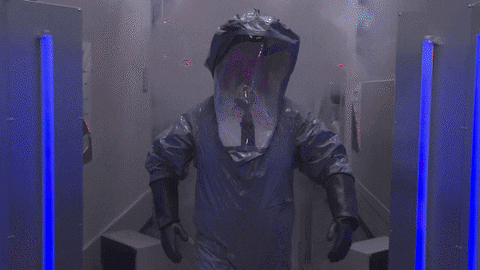
How can UV sanitation methods be used to avoid all coronavirus variants?
As the world reels from the pandemic, we are all looking for ways to protect ourselves and our families. One method that has been getting a lot of attention lately is UV sanitation.
UV sanitation involves using ultraviolet light to kill germs and bacteria. This technology has been around for years and is commonly used in hospitals and other public places.
So, how can UV sanitation be used to avoid all coronavirus variants?
Step 1: Understand the different coronavirus variants
The different variants of the coronavirus include omicron, alpha, beta, and delta. All four variants are considered dangerous and can spread easily via small droplets or aerosols and contact with contaminated surfaces. It is also possible for infected people to spread the virus even if they have no symptoms yet. Furthermore, COVID-19 can be transmitted multiple times from a single source person. The delta variant symptoms is not currently considered a major public health threat in the United States of America. To help prevent infection from any coronavirus variants, it is recommended to use UV sanitation methods such as UV lamps or rooms whenever possible to reduce the risk of exposure to COVID-19 and other viral infections.
Step 2: Learn the warning signs and symptoms of COVID-19
Warning signs and symptoms of COVID-19 include trouble breathing, persistent pain or pressure in the chest, new confusion or inability to be woken up, and pale, grey, or blue-coloured skin. Individuals need to immediately contact their healthcare provider if they experience any warning signs and symptoms. In the case of emergency COVID-19 symptoms such as difficulty breathing, individuals must seek medical attention immediately. To help avoid all coronavirus variants and reduce infection rates across communities, it is also recommended that people use UV sanitation methods when possible.
Step 3: Familiarize yourself with the latest data on the COVID-19 situation in your area
It is extremely important to stay up to date with the latest information on the COVID-19 situation. The virus constantly changes, and new variants may require different prevention methods. By staying informed, individuals can take appropriate precautions, such as UV sanitation procedures, to protect themselves from all coronavirus variants.
Step 4: Consider using UV sanitation methods for your home, workplace, and other public areas
UV sanitation is an effective method for avoiding coronavirus variants because it destroys the virus’ DNA, thus preventing the spread of new variants. By utilizing UV sanitation, individuals can reduce their risk of catching the new covid strain and protect those around them. Additionally, when combined with other preventative measures such as wearing a mask, social distancing, and avoiding high-traffic areas, UV sanitation can help to reduce the spread of coronavirus variants further.
Step 5: Ensure that you are using the correct type of UV sanitation device for the most effective results
It is recommended that people use a UV sanitation device to avoid all coronavirus variants. These devices use ultraviolet light to kill germs and viruses on surfaces, making them highly effective in killing the virus and its variants. To maximize effectiveness, users should ensure that the device is used correctly according to manufacturer instructions and that the area being sanitized is properly covered with UV light for a sufficient amount of time.
Step 6: Make sure to follow the safety instructions for using UV sanitation methods
The safety instructions for using UV sanitation methods include wearing a cloth face covering, tissues, and a hand sanitizer with at least 60 percent alcohol; sanitizing hands after leaving public areas and washing them thoroughly when returning home; asking about safety measures before booking services at a salon; providing clear instructions to attendees if hosting an event outside; following CDC guidelines for the locality such as washing hands often and avoiding close contact with people; telling people in close contact about any positive test so they can get tested too since the virus can spread for five to 10 days after the new covid variant symptoms first appear or after the test date while wearing a high-grade mask around others during this time. Furthermore, it is important to follow all safety instructions provided by the manufacturer of any UV sanitation product.
Step 7: Make sure to wear a face mask and practice social distancing wherever possible
It is important for people to wear a face mask and practice social distancing when they are feeling ill or in public places to help prevent the spread of COVID-19. A face mask helps reduce the risk of spreading the virus, as it prevents droplets from escaping and coming into contact with other people. Social distancing also helps reduce transmission by reducing contact between individuals and limiting close interaction. These measures can help protect not only those who are sick but also those around them, helping to limit the community’s spread of the virus.
Step 8: Monitor yourself and your family for any COVID-19 symptoms
Monitoring for symptoms is important after implementing UV sanitation methods because it helps to identify any new coronavirus variants that can be spread, enabling people to take the necessary steps to prevent further transmission. Early detection of COVID-19 symptoms in individuals exposed to UV sanitation methods can help ensure that those infected receive the appropriate medical attention and care. The Centers for Disease Control and Prevention (CDC) recommends contacting your healthcare provider if you have COVID-19 signs or symptoms. If you have emergency COVID-19 symptoms such as trouble breathing, seek care immediately. These steps will help stop the spread of COVID-19 and get the necessary treatment. Additionally, if someone is exposed to COVID-19, they should use the CDC’s Isolation and Exposure Guidance Tool, which will provide instructions on what next steps they should take.
Step 9: Get tested if you or your family members experience any COVID-19 symptoms
If someone experiences any COVID-19 symptoms, they should use the COVID-19 Isolation and Exposure Guidance Tool to see what steps need to be taken. They should stay home from work or school until they can be checked by a doctor and avoid close contact with surfaces that may have been contaminated. If symptoms persist or worsen after taking these precautions, it is recommended to seek medical help. If someone suspects infection and has not been tested for COVID-19, they should consider getting tested for the virus. Those who have already been tested and are experiencing symptoms should follow CDC’s isolation guidance. To further prevent exposure to all coronavirus variants, UV sanitation methods such as UV light cleaning can be used along with other safety protocols such as wearing masks and social distancing.
Step 10: Get vaccinated when available
Getting vaccinated is an essential step in avoiding all coronavirus variants, as it helps to protect individuals from severe illness, hospitalization, and death associated with the virus. Vaccines are available in three different types, each with its benefits and drawbacks. Ensuring everyone five years and up receives the updated COVID-19 vaccine booster when due will help reduce the spread of all coronavirus variants throughout the United States. This is especially true for Minnesota residents who need to ensure that they are getting their booster shots when due to stay safe from disease caused by any variant of COVID-19.
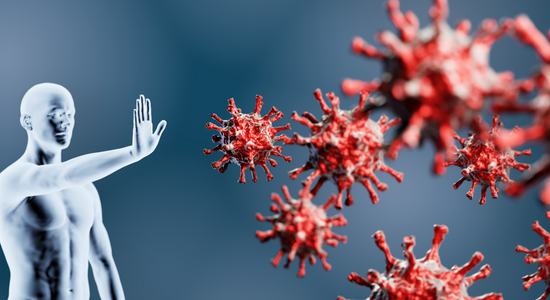
What are the benefits of using UV sanitation methods for controlling COVID-19 spread?
We are all keenly aware of the dangers posed by COVID-19. The virus is highly contagious and can cause severe respiratory illness in people of all ages. As the pandemic continues to spread, we are constantly looking for new ways to protect ourselves and our families from infection.
One method that has been gaining popularity is UV sanitation.UV light has been shown to be effective at killing viruses and bacteria, so it stands to reason that it could help control the spread of COVID-19.
But what are the benefits of using UV sanitation methods? Let’s take a closer look:
UV sanitation is a rapid, efficient, and cost-effective way to reduce the transmission of COVID-19
Studies have shown that UV sanitation effectively reduces the transmission of COVID-19, as it can help kill the virus on surfaces and in the air. Using this method, people can avoid contact with potentially infectious surfaces and breathe cleaner air free from viral particles. This helps to reduce the risk of contracting or spreading the virus, making UV sanitation an important tool in avoiding all coronavirus variants.
UV sanitation is proven to inactivate the virus that causes COVID-19, making it an effective tool for disinfecting surfaces, air, and water
There are numerous benefits of using UV sanitation methods to prevent the spread of coronavirus (COVID-19). These include reducing olfactory dysfunction and sinonasal symptomatology; providing protection for equipment, food, and surfaces; being fast and efficient; reducing the risk of transmitting COVID-19 in fully vaccinated people; and offering an additional vaccine dose for certain immunocompromised individuals. Additionally, UV sanitation methods can help reduce the spread of infection through surface contact, as outlined by the CDC.
UV sanitation can be used in areas where chemical disinfectants, such as hospitals and other healthcare facilities, may not be feasible
UV sanitation methods offer many benefits, including killing any potentially dangerous bacteria, viruses, and other germs that can be transmitted through contact with surfaces. UV sanitation also eliminates odors and helps reduce the risk of infection from COVID-19 by killing the virus on surfaces that could otherwise become a breeding ground for the virus. Additionally, UV sanitation is quick and easy to use and does not require harsh chemicals or sprays to be effective.
UV sanitation is a safe and non-toxic method of sanitization, making it an ideal choice for protecting the environment
The benefits of using UV sanitation methods are numerous. They can help to reduce the spread of infection, prevent cross-contamination, and kill off harmful bacteria and viruses. UV sanitation methods sanitize various surfaces, such as medical equipment and patient clothing. Additionally, these methods can be used in high-risk settings where people cannot avoid being around others who may be ill to protect themselves from disease transmission.
UV sanitation can be used to decontaminate surfaces, air, and water quickly and easily, making it an ideal tool for controlling the spread of COVID-19
The benefits of using UV sanitation methods include preventing the spread of coronavirus, improving olfactory function, reducing the risk of spreading coronavirus, killing harmful bacteria and viruses, controlling the spread of germs and preventing outbreaks, protecting people from getting sick and promoting healthy environments, providing access to inaccessible or off-limits areas, being effective at reducing the spread of disease, being environmentally friendly and easy to use.
UV sanitation is an effective way to reduce the risk of transmission of SARS-CoV-2, the virus that causes COVID-19
The benefits of using UV sanitation methods for controlling COVID-19 spread include killing the virus and bacteria on surfaces, preventing them from spreading, controlling odor, and eliminating allergens. UV sanitation methods can also help reduce the risk of catching a new virus variant since they are effective at slowing its spread.
UV sanitation can be used in areas where traditional cleaning methods may not be effective, such as public transportation and other public spaces
UV sanitation methods have numerous benefits for controlling COVID-19 spread in public areas. These methods effectively kill the virus and reduce its risk of spreading. This can help to prevent the transmission of new variants, as they do not respond to traditional methods like handwashing and social distancing alone. UV sanitation is a quick and efficient way to sanitize surfaces, making them safe for others. Furthermore, these methods can help limit contact with people who may have been exposed to or infected with the virus to prevent further spread.
UV sanitation is a cost-effective way to reduce the spread of COVID-19 in public spaces, as UV sanitation can be used multiple times in a short period
The benefits of using UV sanitation methods for controlling the spread of COVID-19 are numerous. UV sanitation methods are effective at quickly killing the virus and preventing its further spread. Additionally, they are often more efficient than other forms of sanitation, as they require less time to complete their action. Lastly, UV sanitation methods are often less expensive than other approaches, making them attractive for those seeking cost-effective solutions to fighting off coronavirus variants.
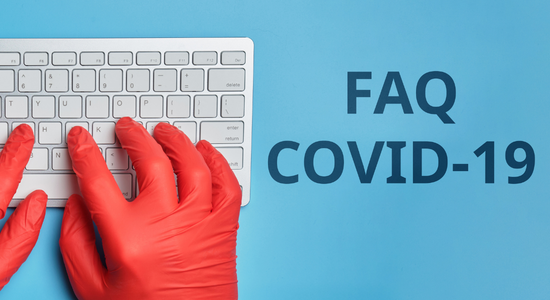
FAQs
Here are some of the most frequently asked questions about Covid-19:
When should you get tested for COVID?
If you are displaying any of the symptoms associated with COVID-19, have been recently exposed to someone with the virus, or have traveled recently, it is important to get tested as soon as possible. If your test results are positive for the virus, contact a health care provider or a Test to Treat site to learn more about available treatments that require a prescription. Additionally, it is important to use UV sanitation methods to reduce your chances of contracting any variant of COVID-19.
How quickly do Omicron subvariant symptoms appear?
The covid incubation period for Omicron variant symptoms is shorter than for previous variants of COVID-19. As such, individuals who have already contracted and recovered from a strain of the virus may experience symptoms at an accelerated rate after being exposed to the Omicron subvariant. Symptoms of the Omicron variant and its subvariants are generally similar. However, these viruses can still cause severe disease in those infected. To prevent infection or re-infection with any coronavirus variant, practicing good hygiene habits and utilizing ultraviolet sanitation methods when possible is important.
What are the differences between flu symptoms and Omicron symptoms?
Omicron symptoms are generally more severe and can include fever, muscle aches, coughing, shortness of breath, chest pain, and difficulty sleeping. Flu symptoms may also include fever, muscle aches, and a headache but are less severe than Omicron symptoms.
How well do face masks protect against coronavirus?
Face masks are an effective way to protect against coronavirus. According to the Mayo Clinic, face masks should be worn with other safety measures, such as washing hands frequently and avoiding contact with people who are sick. People at high risk of serious symptoms from coronavirus, such as the elderly, pregnant women, and young children under five years old, should get vaccinated if available. People can also reduce their chances of transmission by keeping their homes clean and engaging in safe outdoor activities that minimize contact with other people. Additionally, when sexual activity is involved, it is important to use condoms, so both partners know they are protected from infection from the virus. If someone experiences unusual symptoms, they should seek medical attention immediately.
- New COVID Symptoms: How to avoid all coronavirus variants using UV sanitation methods - December 23, 2022
- Sanitation 101: Tips on How To Safely Clean Your Baby’s Toys - August 26, 2022

